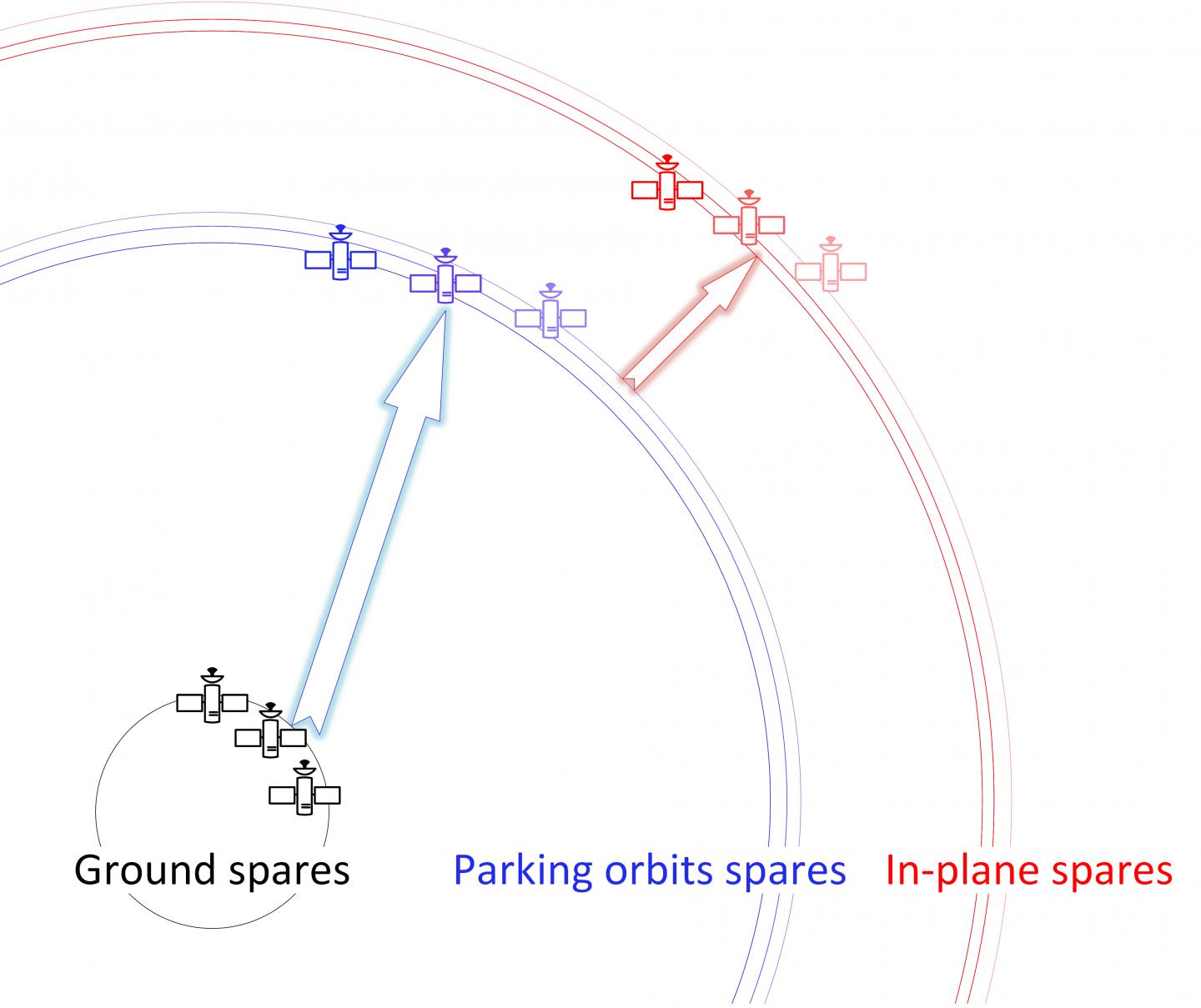
Credit: University of Illinois Department of Aerospace Engineering
Today, large-scale communication satellite constellations, also known as megaconstellations, have been more and more popular. OneWeb launched the first batch of satellites of an initial 650-satellite constellation in February 2019, and SpaceX also launched the first batch of its 12,000-satellite constellation in May 2019. On July 8, Amazon also filed an application with the FCC for its planned satellite constellation with 3,236 satellites. These satellite constellations are expected to be a game changer by realizing the worldwide satellite Internet service.
However, the unprecedently large scale of these megaconstellations also brings numerous challenges, some of which are hidden and not well-explored. Researchers at the University of Illinois at Urbana-Champaign identified a critical hidden challenge about replacing the broken satellites in megaconstellations and proposed a unique solution with inventory control methods.
“Maintaining these large-scale megaconstellations efficiently is far more complex than the traditional space systems. In fact, it has become more and more like a ground logistics problem that FedEx or UPS has been working on. So we tackled this megaconstellation maintenance problem leveraging the idea from ground logistics, which turns out to be not only unique and interesting but also very suitable in this context” said Koki Ho, assistant professor in the Department of Aerospace Engineering at U of I.
The challenge Ho described is to efficiently swap out a new satellite for one that breaks. For telecommunications companies, broken satellites mean interrupted communications and Internet service, which leads to disgruntled customers and loss of revenue.
“Deploying a large-scale constellation is one problem, but maintaining it is another possibly more challenging problem,” Ho said. “When the satellites break, providing a spare quickly is important so there is little gap in the service. Companies need continuous service to provide global coverage. In order to achieve that, we need to have sufficient spares in orbit. The question is: how many would be sufficient. Can we think of a smarter way to use as few satellites as possible to satisfy the gap requirement?”
In earlier satellite constellations, Ho said this was not a problem because the scale was small enough sophisticated methods to calculate the needed number of spares was not needed; just having a few spares per orbital plane was enough. But with a constellation made up of hundreds of satellites, the strategy won’t work. Also, new, small satellites are cheaper but have a relatively higher failure rate so many more spares are needed in each orbital plane, and that’s inefficient.
“Our idea is to use something called a multi-echelon inventory control method in the ground logistics and apply it to the orbital mechanic’s context,” Ho said. “In our solution, another orbit that is lower than the actual orbit, which we call the parking orbit; becomes an intermediate warehouse of the satellites. A small number of spare satellites are in the actual orbital plane for immediate replacement, while a larger inventory of replacement satellites is waiting in the parking orbit. The ones in the orbital plane cover an immediate need, the spares in the parking orbit can replenish the actual orbit.”
The research also takes advantage of the J2 effect of the orbital plane, which is caused by the Earth’s obliqueness, to deliver the spares. The Earth is not a perfect sphere, Ho explained, and because it’s not a perfect sphere, the orbital plane will shift.
“That orbital plane shift rate is different depending on the altitude,” Ho said. “So when we have a parking orbit that is at a lower altitude than the original constellation orbit, their orbital shift rates are different. The mathematical model we created takes into account that rate shift and which plane is closer to the satellite in need of replacing so that you will have continuous coverage of the Earth. The method looks at which orbital plane is the first one that will match with the plane that has a demand and also consider whether that plane actually has spares in it. If that plane doesn’t have spares, then we wait until the next plane,” Ho said.
Ho said this method also removes the costly urgency to launch a replacement satellite.
“With this warehouse strategy, when there is a failed satellite, there is already an inventory of stock available to replace it. When the stock goes below a threshold, you can launch more to the parking orbit. This takes advantage of the batch launch effect. It’s cheaper to send one rocket up with a bunch of satellites than launching each of them separately.”
Ho believes this new supply method solves a timely problem.
“People are talking a lot about these megaconstellations but they haven’t thought deeply enough about some of the new challenges they bring,” Ho said. “Using a unique warehouse approach provided an efficient solution to address this complex problem.”
###
Media Contact
Koki Ho
[email protected]
Original Source
https:/
Related Journal Article
http://dx.



